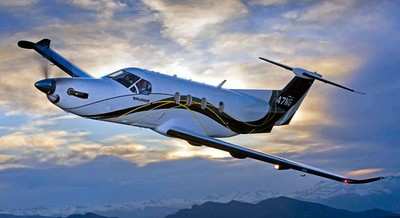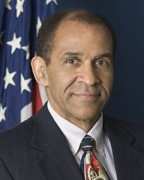Changes Stem From Pilatus PC-12 Accident In March 2009
 The NTSB has issues a set of three safety recommendations to
the FAA concerning seat belts and restraints in general aviation
aircraft. The action comes from the investigation of an accident in
March, 2009, in which a Pilatus PC-12/45, (N128CM), was diverting
to Bert Mooney Airport (BTM), Butte, Montana, when it descended and
impacted the ground near the approach end of runway 33 at BTM. The
airplane was owned by Eagle Cap Leasing of Enterprise, Oregon, and
was operating as a personal flight under the provisions of 14 Code
of Federal Regulations (CFR) Part 91. The pilot and the 13 airplane
passengers were killed, and the airplane was destroyed by impact
forces and a postcrash fire. The flight departed Oroville Municipal
Airport, Oroville, California, at 1210 on an instrument flight
rules (IFR) flight plan with a destination of Gallatin Field,
Bozeman, Montana. Visual meteorological conditions prevailed at the
time of the accident.
The NTSB has issues a set of three safety recommendations to
the FAA concerning seat belts and restraints in general aviation
aircraft. The action comes from the investigation of an accident in
March, 2009, in which a Pilatus PC-12/45, (N128CM), was diverting
to Bert Mooney Airport (BTM), Butte, Montana, when it descended and
impacted the ground near the approach end of runway 33 at BTM. The
airplane was owned by Eagle Cap Leasing of Enterprise, Oregon, and
was operating as a personal flight under the provisions of 14 Code
of Federal Regulations (CFR) Part 91. The pilot and the 13 airplane
passengers were killed, and the airplane was destroyed by impact
forces and a postcrash fire. The flight departed Oroville Municipal
Airport, Oroville, California, at 1210 on an instrument flight
rules (IFR) flight plan with a destination of Gallatin Field,
Bozeman, Montana. Visual meteorological conditions prevailed at the
time of the accident.
According to the letter making the recommendations, the airplane
was configured with two pilot seats and eight passenger seats. Two
of the passenger seats faced aft, and the other six passenger seats
faced forward. All of the pilot and passenger seats were equipped
with lap and shoulder harness restraints.
Among the 13 passengers were six adults and seven children (ages
1 through 9 years). Because the flight was a single-pilot
operation, eight seats in the cabin and one seat in the cockpit
were available to the 13 passengers. Thus, the number of passengers
exceeded the number of available seats. Except for the pilot and
the occupant of the right front seat, the National Transportation
Safety Board (NTSB) was unable to determine the original seating
position for the occupants, but the bodies of four children, ages 3
to 9 years, were found farthest from the impact site, indicating
that these children were likely thrown from the airplane because
they were unrestrained or improperly restrained. The investigation
of this accident is ongoing, and evidence indicates that the
accident was not survivable. However, the NTSB notes that, if the
accident had been less severe and the impact had been survivable,
any unrestrained occupants or occupants sharing a single restraint
system would have been at a much greater risk of injury or
death.

Pilatus PC-12 File Photo
The NTSB now recommends that the Federal Aviation
Administration:
- Amend 14 Code of Federal Regulations Part 91 to require
separate seats and restraints for every occupant.
- Amend 14 Code of Federal Regulations Part 91 to require each
person who is less than 2 years of age to be restrained in a
separate seat position by an appropriate child restraint system
during takeoff, landing, and turbulence.
- Amend 14 Code of Federal Regulations Parts 121 and 135 to
require each person who is less than 2 years of age to be
restrained in a separate seat position by an appropriate child
restraint system during takeoff, landing, and turbulence.
The board was not unanimous in its recommendation. Vice Chair
Christopher A. Hart wrote in his dissenting statement that "sending
a recommendation to the FAA about requiring separate seats and
restraints for passengers under 2 is a futile effort because we
have made that recommendation before, without success, and we have
no reason to believe that this approach will achieve a better
result this time.

NTSB Vice Chair Hart
"In filing this dissent, let me note at the outset that it is
indisputable as a matter of basic physics that a properly
restrained child in an airplane is safer than an unrestrained
child, and our goal should be to do whatever we can to help assure
that every person in an airplane is restrained, irrespective of
age. Given that our previous approach has been unsuccessful, I
would like to suggest an alternate approach to reach that goal.
"The different approach I would like to suggest relates to the
fact that infant car seats have improved tremendously since the FAA
first promulgated its regulatory exception that allows passengers
under the age of 2 not to be restrained – indeed, car seats
for children that age may not even have existed when the exception
was first created. Given these car seat improvements, perhaps it is
time to revisit whether there is still a scientific basis for an
exception for children under 2. Thus, I think we should recommend
that the FAA revisit, in light of current infant car seat
technology, whether there is a scientific basis for excepting
children under age 2 from the restraint requirements . . . and if
there is no scientific basis for the exception, then the exception
is arbitrary, by definition, and SHOULD BE RESCINDED" (emphasis
his).
 Airborne 05.10.24: Icon Auction, Drunk MedEvac Pilot, Bell ALFA
Airborne 05.10.24: Icon Auction, Drunk MedEvac Pilot, Bell ALFA ANN's Daily Aero-Term (05.13.24): ILS PRM Approach
ANN's Daily Aero-Term (05.13.24): ILS PRM Approach ANN's Daily Aero-Linx (05.13.24)
ANN's Daily Aero-Linx (05.13.24) Airborne-NextGen 05.07.24: AI-Piloted F-16, AgEagle, 1st 2 WorldView Sats
Airborne-NextGen 05.07.24: AI-Piloted F-16, AgEagle, 1st 2 WorldView Sats Airborne 05.08.24: Denali Update, Dad-Daughter Gyro, Lake SAIB
Airborne 05.08.24: Denali Update, Dad-Daughter Gyro, Lake SAIB





